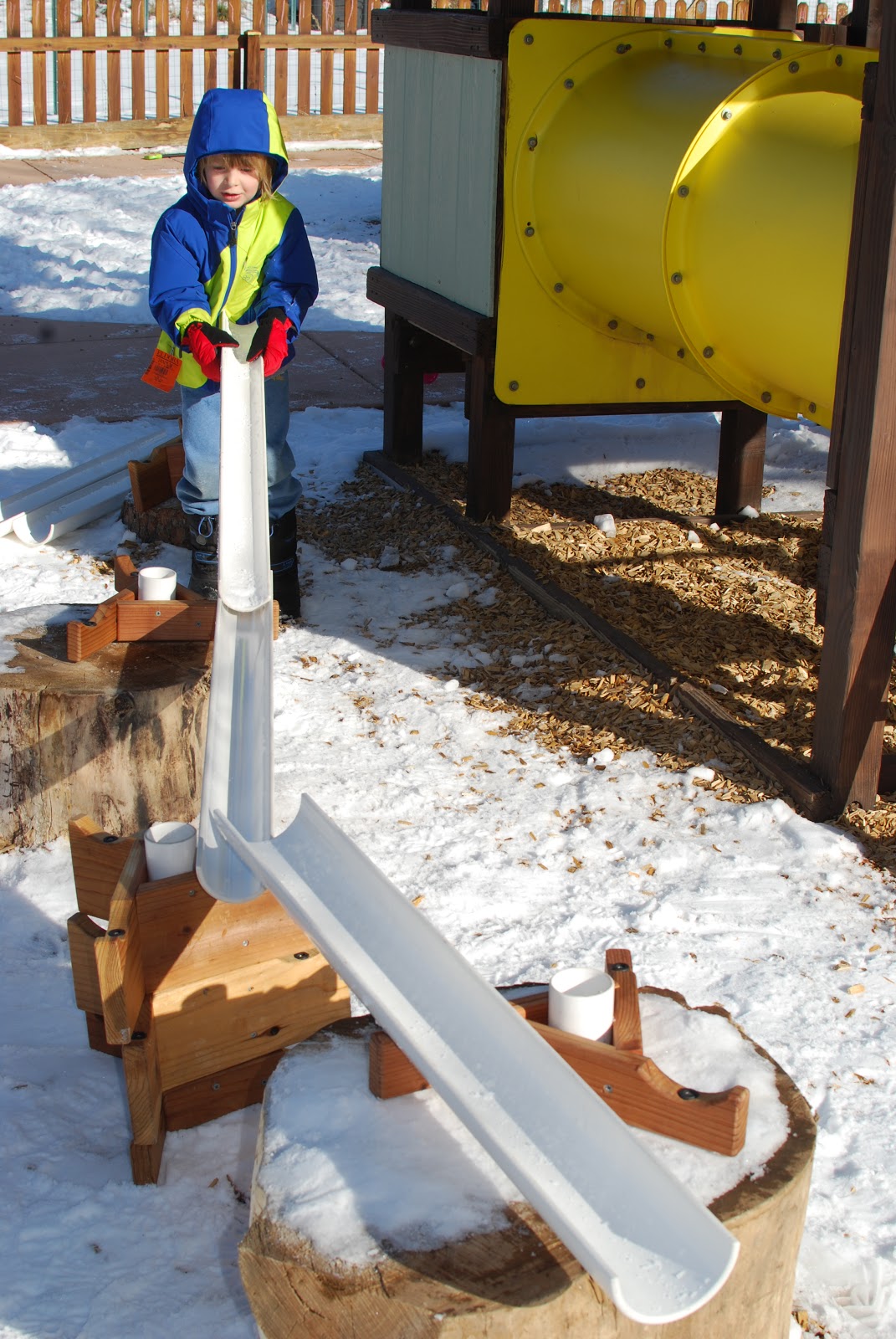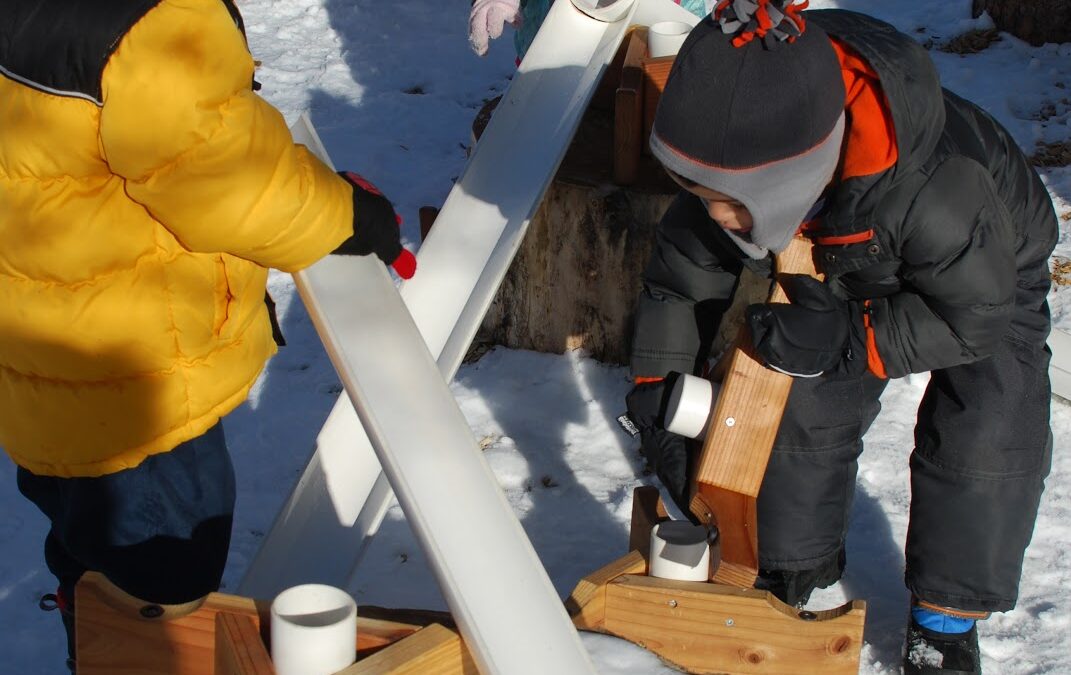It’s winter in Colorado and the children are enjoying the sunny day and some much needed time outdoors. Logan invites his friends to build something with him. His plan includes using outdoor ramps, which each of the children carry out of the storage shed and into the yard. With a little bit of help from the teacher all the ramp stands and loose pieces are arranged near the fence. Then the work of construction begins.
Everyone pitches in arranging the ramps. Logan has an aha moment, “Let’s use the stumps”, he shouts to the group.
“Right”, chimes in another, “that will be how the road is a bridge-road!”
I interpreted this to mean, like a bridge support, a stump would provide elevation and a designated space in which to span the individual ramp pieces.
The children, having never used the ramps in the snow, experimented with using the snow as a support material, much like they would sand.
They arranged and rearranged the sections. They changed the number and size of ramp stands as they tinkered with their design. Some adjusted the position of the stands in relation to the stumps and ramps, swiveling the ends in order to change the direction of the “bridge-road” sections. A few test runs during the course of this play lead to discussions about height, distance, and speed. The following was taken from their conversations:
- “Look guys, if the beginning starts high up there, then the ball will go fast! So use the big stump first.”
- “How high does the middle have to be?”
- “I don’t know, we have to figure it out.”
- “Do we want a straight bridge-road?”
- “Make it long so it goes to the sidewalk.”
- “Hey if the middle is too high then we won’t get a fast run….and, and it probably won’t even work.”
- “I know, we should test it out.”
- “Yeah, testing it out would be good.”

The “testing ball” (the snowball to be exact) stopped along the course, Logan made a discovery, “Look, we got a problem part! See this part of the bridge-road? (refers to the position of the last ramp) It has to be under the other ramp.”
“Hey, Logan, that’s so funny. We got the middle right, but not the end. That’s so funny cuz we we thought the middle was going to be the problem.”
After re-positioning the last ramp which solved the problem, the group created lots of snowballs,which is another story in itself! One after another, the snowballs tumbled down the bridge-road. Some crumbled, some slid lazily, and others went zooming down.
Could these children have been inspired to invent a bridge-road if the stumps were not there? Possibly, but I think those stumps offered much inspiration and I was so very pleased to see the children incorporate these natural elements into their design. It’s what engineers do everyday!
Tinker-thinking is a natural occurrence in children’s play. Listen for their questions, narrations, and watch their actions closely. You’ll soon be capturing stories of your own that can demonstrate how combining materials with the physical elements around them gives children the opportunity to tinker and think as they play.


